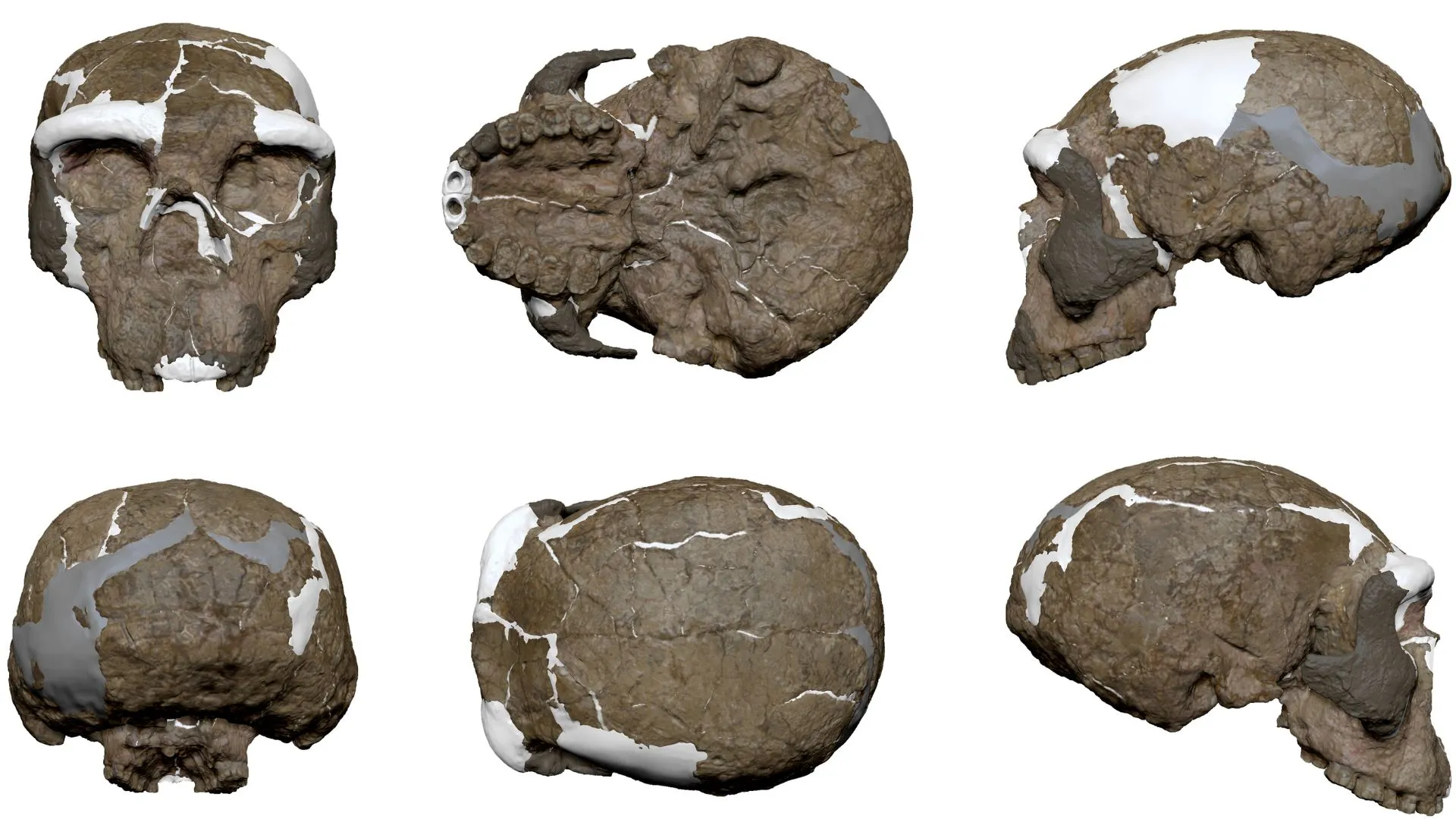
A groundbreaking digital reconstruction of a million-year-old skull in China suggests humans may have emerged and co-existed hundreds of thousands of years earlier than scientists previously believed.
Scientists had long assumed that the skull, unearthed in China’s Hubei Province in 1990 and named Yunxian 2, belonged to Homo erectus, an early human ancestor. However, a new analysis challenges that classification, suggesting it could be part of a sister lineage closely related to Homo longi and even Homo sapiens. This hints that our closest ancestor may have emerged 400,000 years earlier than previously thought.
“This changes a lot of thinking,” said Chris Stringer, an anthropologist at London’s Natural History Museum, in an interview with CBS News.
“It suggests that by 1 million years ago, our ancestors had already split into distinct groups, pointing to a much earlier and more complex human evolutionary split than previously believed.”
If confirmed, the findings, which were published in the journal Science, could radically alter our understanding of human evolution by showing that modern humans, Neanderthals, and related species co-existed across Asia for hundreds of thousands of years.
Rewriting human history
According to CBS News, researchers used advanced CT scanning, structured light imaging, and digital reconstruction techniques to restore the skull to its original shape, despite extensive fossil deformation.
Xijun Ni, a professor at Fudan University who co-led the study, told BBC News that the team repeatedly tested their models and methods before reaching their conclusions because they found it almost “unbelievable.”
“How could that be so deep in the past?” Ni wondered. “But we tested it again and again…and now we are confident about the result.”
The study suggests Yunxian 2 is an early member of a lineage that includes Homo longi, also known as “Dragon Man.” It might be closely related to the ancestors of Homo sapiens, as CBS News explains. The new analysis also challenges the long-held assumption that modern humans evolved solely in Africa.
The findings “muddle the waters” on human migration and evolution, highlighting a potentially key role for East Asia in hominin development, according to Michael Petraglia, director of Griffith University’s Australian Research Centre for Human Evolution, in a statement to CBS News.
The findings could help resolve the long-standing “Muddle in the Middle” of human evolution, a period between one million and 300,000 years ago that has produced confusing fossil evidence. While multiple human lineages have been discovered from this time, scientists have struggled to create a clear timeline.
Yunxian 2 provides a clearer example of an earlier lineage, suggesting that several major human lineages—Homo sapiens, Neanderthals, and sister species like Homo longi—may have co-existed for hundreds of thousands of years, interacting and potentially interbreeding. Stringer told CBS News that “fossils like Yunxian 2 show just how much we still have to learn about our origins.”
A window into early human evolution
Some experts, however, urge caution. An evolutionary geneticist at Cambridge University told BBC News that the study’s conclusions are plausible, but uncertainties remain.
“That picture is still quite unclear to us, so if the conclusions of this research are supported by other analyses, ideally from some genetic data, then I think we would start to be increasingly confident about it,” Dr. Aylwyn Scally said.
The discovery of Yunxian 2 underscores the complexity of human evolution and the potential for East Asia to have played a central role in the emergence of modern humans. While further research and genetic evidence will be necessary to confirm these findings, CBS News and BBC News report that this skull offers one of the most detailed glimpses yet into how our ancestors diversified and co-existed with sister species over the past million years.



